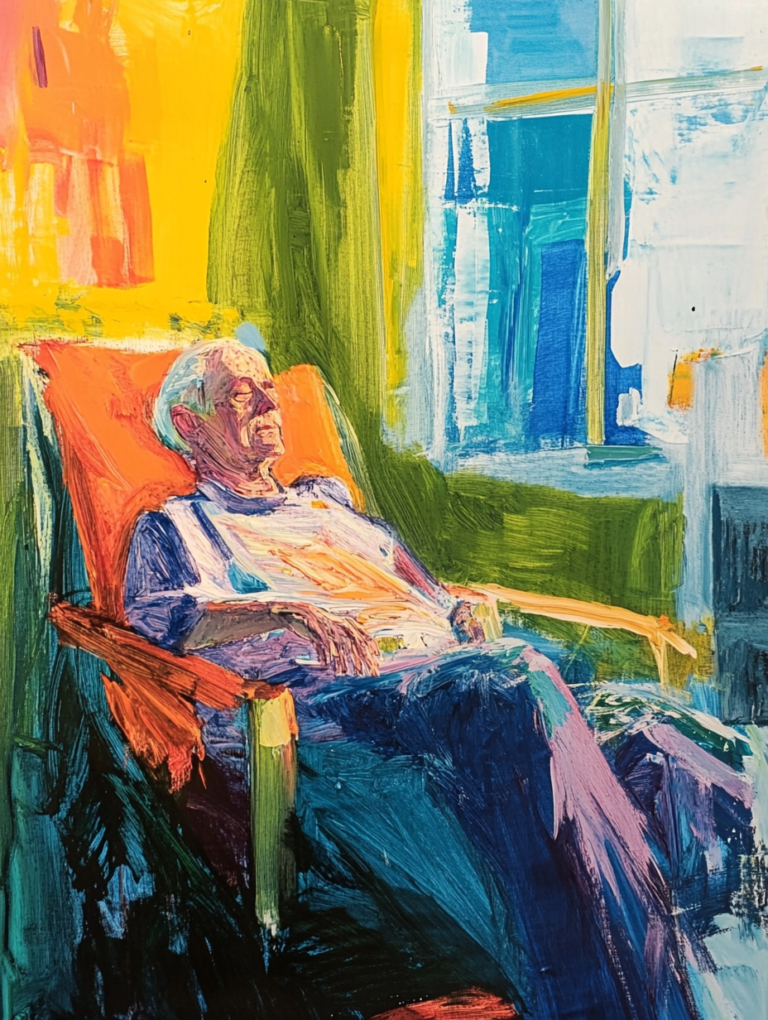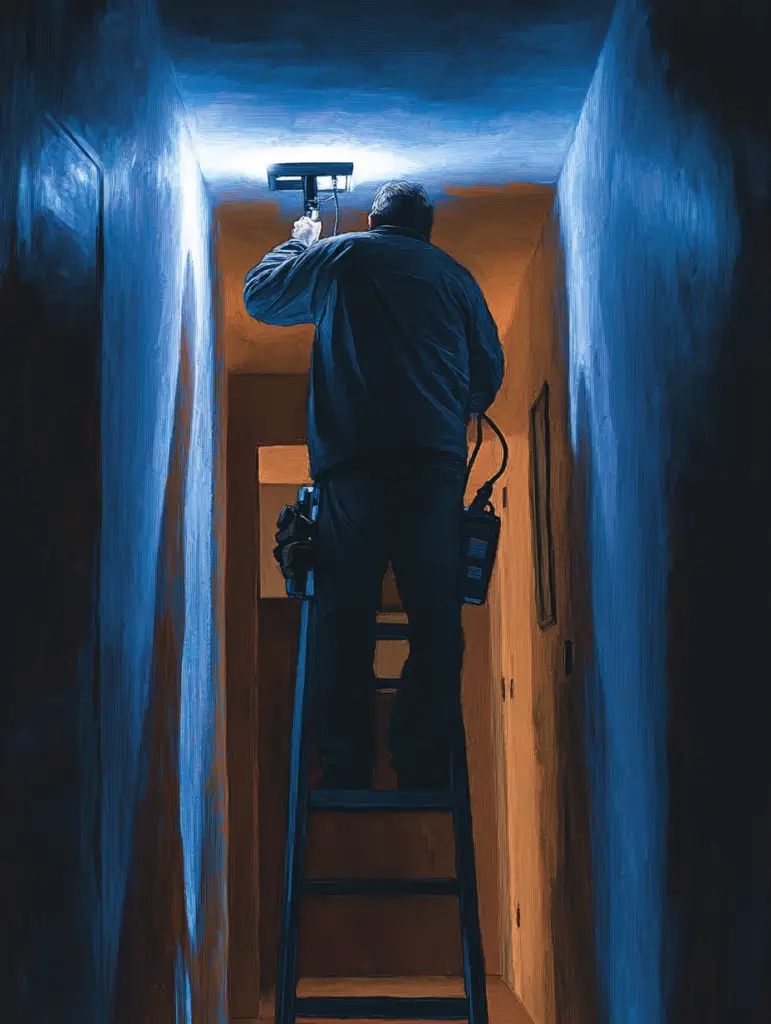Home Safety Checklist for Seniors: Steps You Can Take Today
As we age, ensuring our homes remain safe and accommodating becomes increasingly vital. Statistics from the Centers for Disease Control and Prevention (CDC) reveal that one in four seniors experiences a fall each year, leading to serious injuries and hospitalizations.
However, many of these incidents are preventable through proactive measures and home modifications. This comprehensive guide offers a detailed, research-backed checklist to help seniors create a safer living environment.
Understanding the Importance of Home Safety for Seniors
Aging brings about physical changes that can increase the risk of accidents at home:
- Decreased Balance and Coordination: Muscle weakness and joint issues can affect stability.
- Reduced Vision and Hearing: Sensory impairments make it harder to detect hazards.
- Slower Reflexes: Delayed reactions can prevent timely responses to dangerous situations.
Addressing these challenges through home safety measures can significantly reduce the risk of injuries and enhance independence.
Comprehensive Room-by-Room Safety Checklist
1. Living Room and Common Areas
These spaces are central to daily activities and should be free from hazards:
- Eliminate Tripping Hazards:
- Secure loose rugs with non-slip backing or remove them entirely.
- Keep walkways clear of furniture, cords, and clutter.
- Enhance Lighting:
- Install bright, energy-efficient bulbs.
- Use motion-sensor lights to illuminate pathways automatically.
- Secure Furniture:
- Anchor heavy items like bookshelves and televisions to the wall to prevent tipping.
- Install Handrails:
- Place sturdy handrails along hallways and near steps for added support.
2. Kitchen
The kitchen presents unique risks due to heat, sharp objects, and frequent movement:
- Organize Storage:
- Keep frequently used items within easy reach to avoid overreaching or using step stools.
- Maintain Appliances:
- Ensure all appliances are in good working order.
- Use automatic shut-off features to prevent overheating or fires.
- Prevent Fires:
- Keep flammable materials away from the stove.
- Install a smoke detector near the kitchen and test it monthly.
- Use Non-Slip Mats:
- Place mats near the sink and stove to prevent slipping on wet floors.
3. Bathroom
Bathrooms are common sites for slips and falls due to wet surfaces:
- Install Grab Bars:
- Place bars near the toilet and inside the shower or bathtub for support.
- Use Non-Slip Mats:
- Ensure mats inside and outside the shower have non-slip backing.
- Adjust Water Temperature:
- Set the water heater to 120°F (49°C) or lower to prevent scalding.
- Consider a Walk-In Tub or Shower:
- These designs reduce the need to step over high edges, minimizing fall risk.
4. Bedroom
A safe and comfortable bedroom is essential for restful sleep:
- Improve Lighting:
- Use bedside lamps with easy-to-reach switches.
- Install nightlights to illuminate the path to the bathroom.
- Secure Furniture:
- Ensure dressers and nightstands are stable and cannot tip over.
- Bed Height:
- Adjust the bed to a height that allows easy access without straining.
- Keep Essentials Within Reach:
- Place phones, glasses, and medications on a bedside table to avoid unnecessary movement at night.
5. Stairways and Hallways
These areas require special attention to prevent falls:
- Install Handrails:
- Ensure handrails are present on both sides of staircases and are securely fastened.
- Improve Visibility:
- Use contrasting colors on steps to differentiate edges.
- Keep stairs and hallways well-lit at all times.
- Remove Obstacles:
- Keep these areas free from clutter, cords, and loose rugs.
- Consider Stair Lifts:
- For those with mobility issues, installing a stair lift can provide safe access to upper floors.
6. Outdoor Areas
Safety doesn’t stop at the front door; outdoor spaces need attention too:
- Maintain Walkways:
- Repair cracks and remove obstacles like branches or garden tools.
- Install Adequate Lighting:
- Use motion-sensor lights for driveways, pathways, and entryways.
- Secure Railings:
- Ensure that all outdoor steps and porches have sturdy railings.
- Store Tools Safely:
- Keep gardening tools and equipment in a locked shed or garage to prevent accidents.
General Safety Recommendations
Beyond room-specific tips, consider these general safety measures:
1. Fall Prevention
- Regular Exercise:
- Engage in activities like tai chi or yoga to improve balance and strength.
- Wear Appropriate Footwear:
- Choose shoes with non-slip soles and avoid walking in socks on slippery floors.
- Review Medications:
- Some medications can cause dizziness or drowsiness. Regularly consult with a healthcare provider to manage side effects.
2. Fire Safety
- Install Smoke and Carbon Monoxide Detectors:
- Place detectors on every floor and test them monthly.
- Plan and Practice an Escape Route:
- Ensure all household members know how to exit the home quickly in case of fire.
- Avoid Overloading Electrical Outlets:
- Use power strips with surge protectors and unplug appliances when not in use.
3. Emergency Preparedness
Being prepared for unexpected events is essential for seniors. Emergencies like power outages, severe weather, or medical incidents can be challenging without a plan in place.
- Create an Emergency Kit:
- Include essentials such as:
- Flashlights and extra batteries.
- A first aid kit.
- Medications with a list of dosages and schedules.
- Non-perishable food and bottled water for at least three days.
- A battery-operated radio for weather updates.
- Personal identification, emergency contacts, and insurance information.
- Include essentials such as:
- Have a Communication Plan:
- Identify a trusted family member, friend, or neighbor who can check on you regularly.
- Ensure you have a fully charged cell phone with important numbers programmed in.
- Consider enrolling in a medical alert system with a wearable device for emergencies.
- Backup Power Solutions:
- If you rely on medical equipment like oxygen machines, ensure you have a generator or backup battery system.
- Keep portable chargers for phones and other critical devices.
4. Health and Wellness Focus
Good physical and mental health can contribute significantly to reducing risks at home.
- Maintain Regular Health Checkups:
- Schedule annual physical exams to monitor vision, hearing, and balance issues that may impact safety.
- Review medications to identify any side effects that could increase the risk of falls or confusion.
- Diet and Hydration:
- Maintain a balanced diet rich in calcium and vitamin D to support bone health.
- Stay hydrated to avoid dizziness or fainting caused by dehydration.
- Stay Active:
- Engage in exercises that improve strength, flexibility, and coordination. Activities like walking, water aerobics, and tai chi are excellent options.
The Role of Technology in Senior Safety
Technology can play a vital role in keeping seniors safe at home. Here are some tools to consider:
- Fall Detection Systems:
- Wearable devices with built-in fall detection can automatically alert emergency services or family members if you fall.
- Smart Home Devices:
- Voice-activated assistants (like Alexa or Google Assistant) can help seniors control lights, thermostats, and alarms without needing to move around.
- Smart locks and video doorbells enhance security by allowing you to see and communicate with visitors remotely.
- Medication Management Tools:
- Automated pill dispensers with reminders ensure that medications are taken correctly and on time.
- Remote Monitoring Systems:
- Family members can monitor a senior’s safety through connected devices that track movement and detect unusual activity patterns.
Research-Backed Benefits of Home Safety for Seniors
Implementing these safety measures has been shown to significantly improve outcomes for seniors:
- Reduced Fall Risk:
- According to the CDC, simple modifications like adding grab bars and improving lighting can reduce the risk of falls by up to 40%.
- Improved Independence:
- A study in The Gerontologist found that seniors who made home modifications were 25% more likely to continue living independently.
- Enhanced Mental Well-Being:
- Knowing that your home is safe can reduce anxiety and improve overall quality of life.
- Decreased Healthcare Costs:
- Preventing falls and injuries saves money on medical bills. The CDC estimates that the average hospital cost for a fall-related injury is over $30,000.
Tips for Making Safety Modifications Affordable
For seniors on a budget, safety upgrades might feel like a financial challenge. However, there are cost-effective ways to make meaningful improvements:
- Check for Assistance Programs:
- Many local governments, non-profits, and community organizations offer grants or low-cost home modification services for seniors.
- Programs like the Older Americans Act and Medicaid may cover certain home safety upgrades.
- Do-It-Yourself Solutions:
- Some improvements, like adding non-slip mats, securing cords, and organizing storage, can be done inexpensively and independently.
- Leverage Tax Deductions:
- Certain home modifications, especially those related to medical needs, may be tax-deductible. Consult a tax professional to explore your options.
- Ask Family for Help:
- Involve family members in making changes. Many tasks, like installing grab bars or rearranging furniture, can be done together.
A Safer Home Today for a Better Tomorrow
Taking steps to create a safer home doesn’t have to happen all at once. Start by identifying the most pressing hazards and addressing them first. Each modification you make brings you closer to a secure and comfortable living space where you can enjoy peace of mind.
Remember, home safety is an ongoing process. Regularly reassess your home environment, stay proactive about your health, and don’t hesitate to seek help from loved ones or professionals. By making these adjustments today, you’re investing in a safer, healthier, and more independent future.
Bibliography
- Centers for Disease Control and Prevention. “Older Adult Falls.” www.cdc.gov
- National Fire Protection Association. “Home Fire Safety for Older Adults.” www.nfpa.org
- National Institute on Aging. “Home Safety Tips for Older Adults.” www.nia.nih.gov
- Consumer Product Safety Commission. “Protect Seniors from Home Hazards.” www.cpsc.gov
- The Gerontologist. “Impact of Home Modifications on Senior Independence.” gerontologist.oxfordjournals.org




